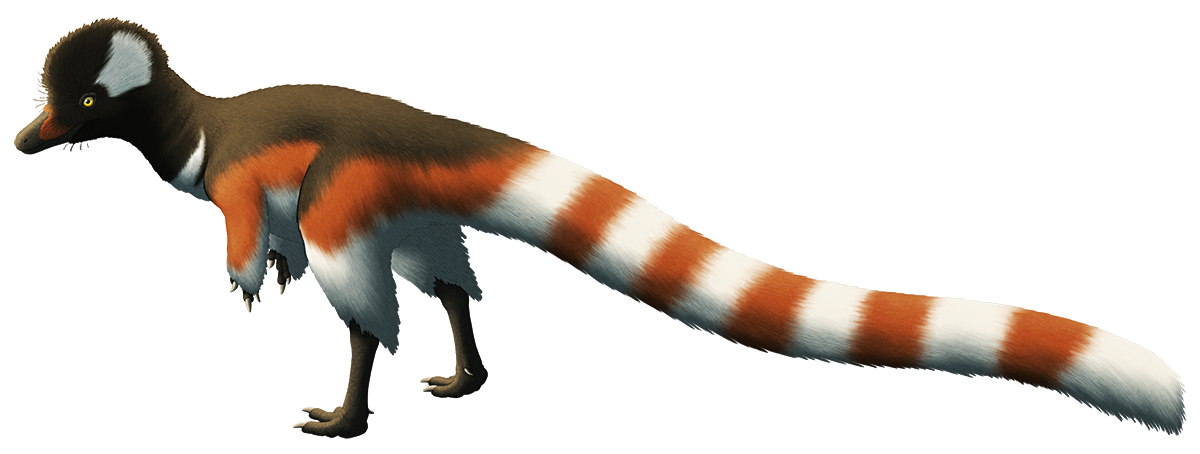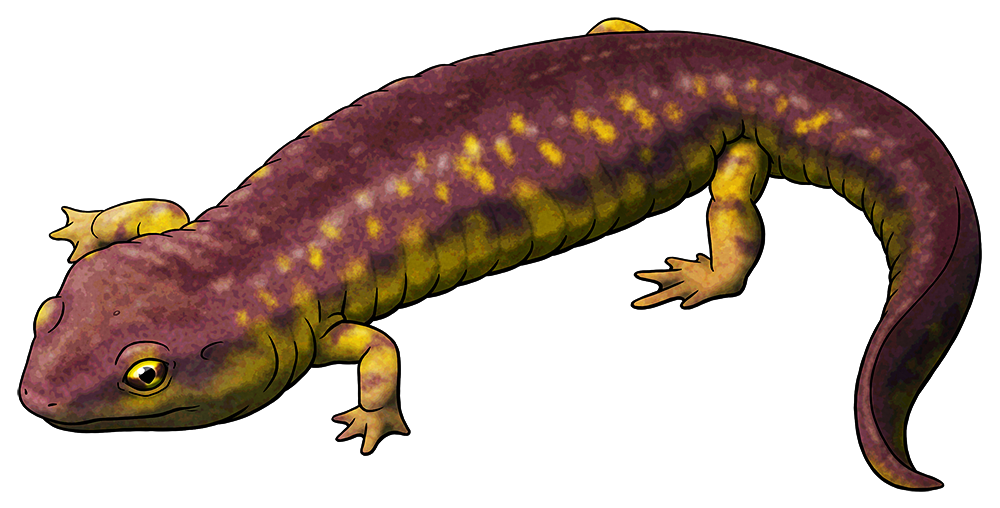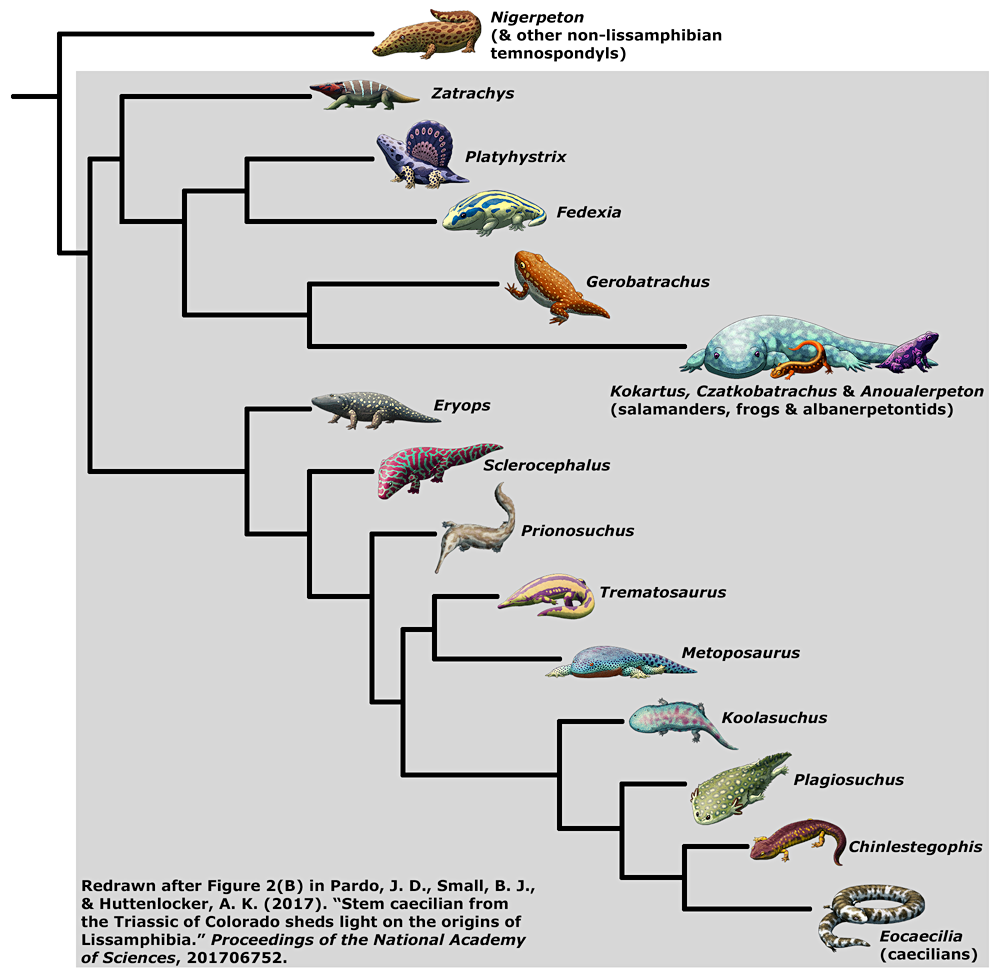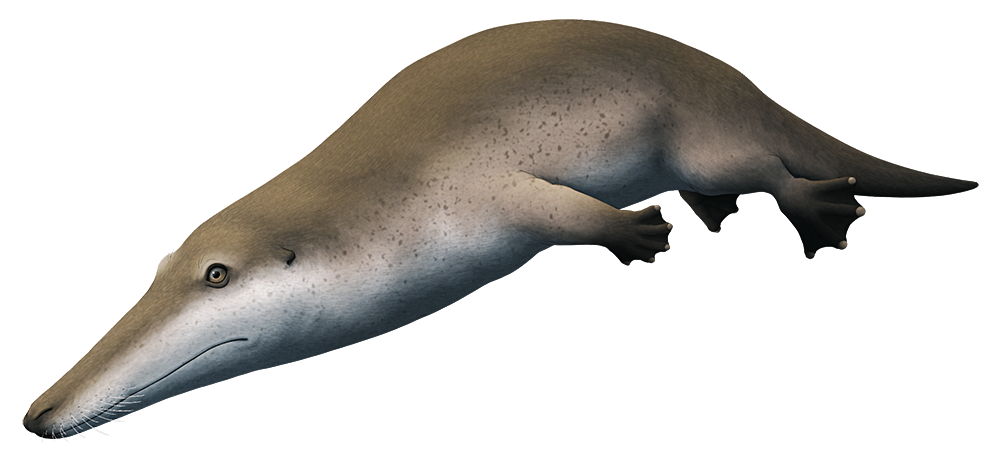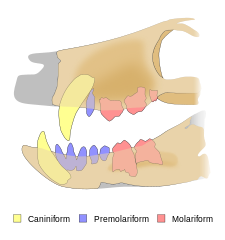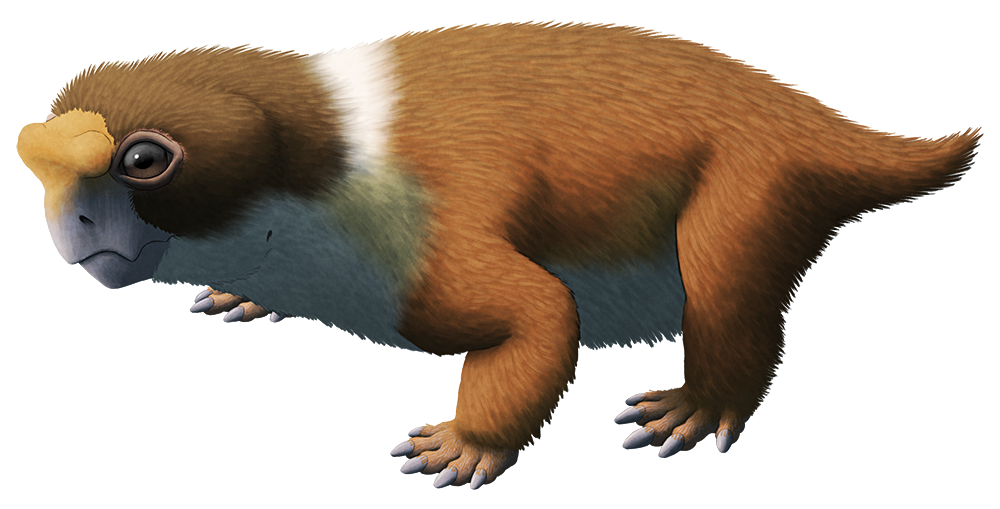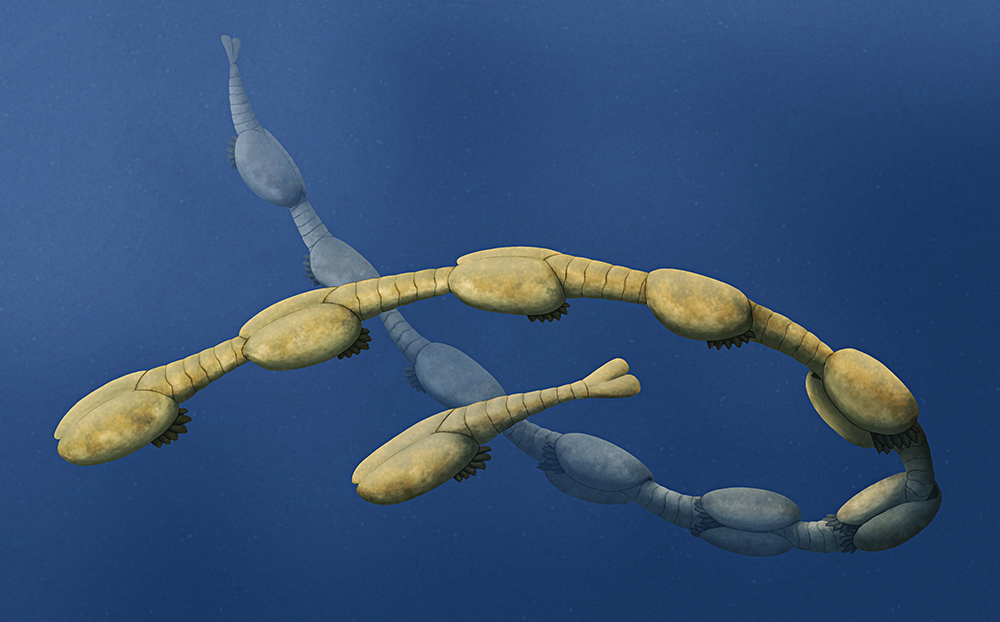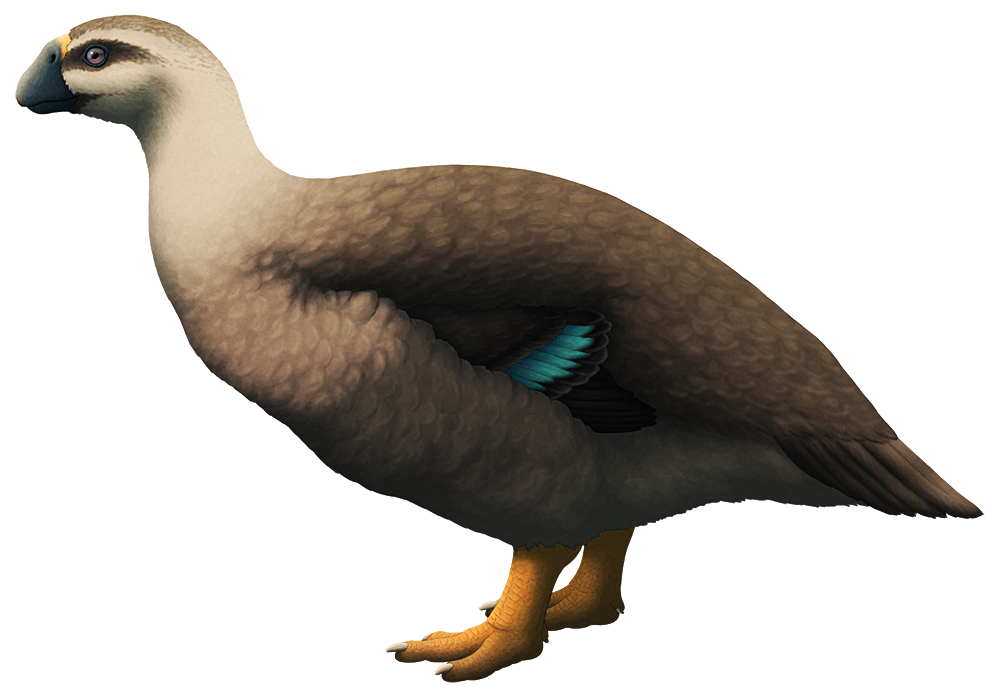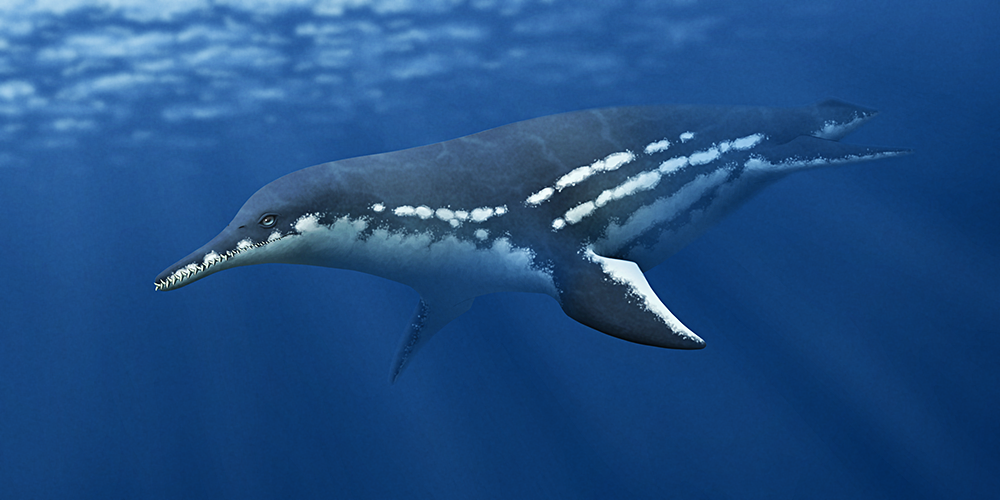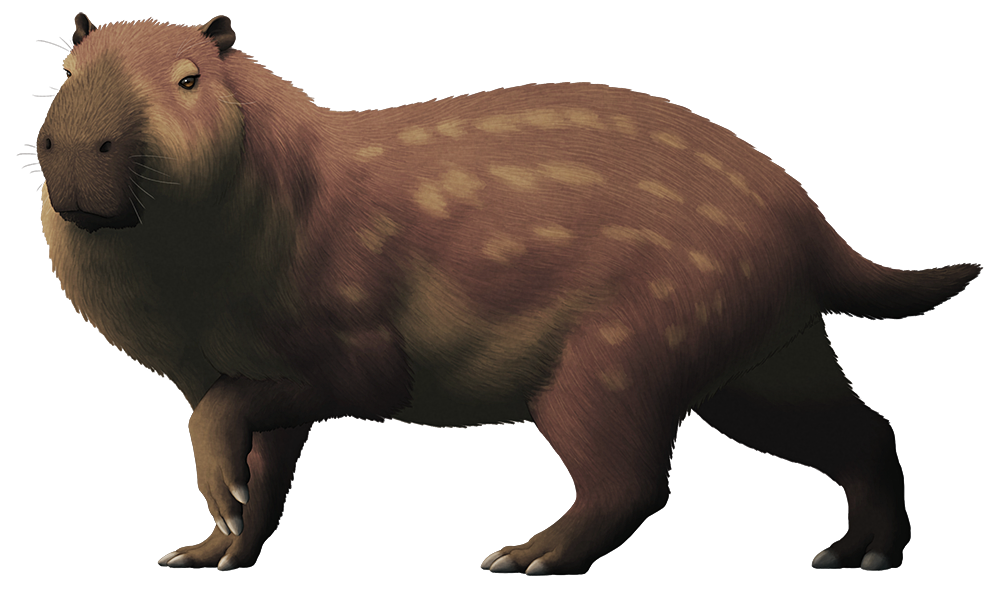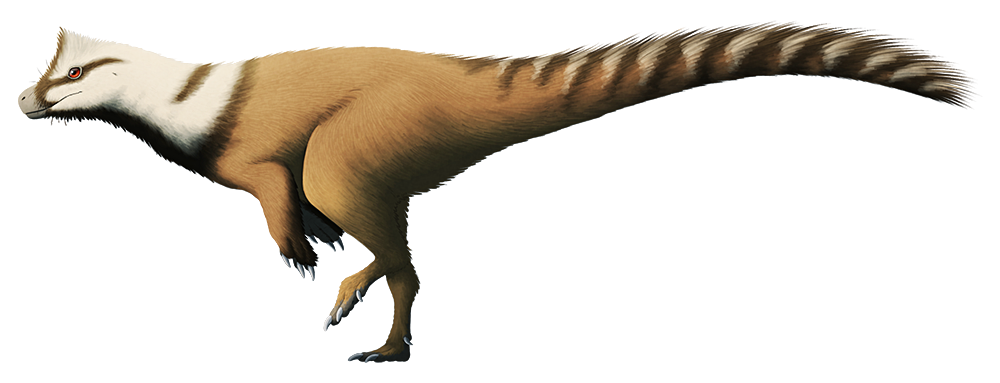Mirischia asymmetrica, a theropod dinosaur from the Early Cretaceous of Brazil (~112-99 mya). Although known only from its hips and a few other partial bones, these pieces were so well-preserved that it was given a genus name that translates to “wonderful pelvis”.
In life it would have been about 2m long (6′6″), but since the known fossil represents a subadult its full-grown size may have been a little bit larger. It was probably a member of the compsognathids, closely related to Compsognathus and Aristosuchus – which would make it the only representative of that family currently known from the Americas.
The ischium bones of Mirischia’s pelvis were oddly asymmetrical, hence the species name ‘asymmetrica’, with one side featuring a hole and the other side only having a notch in the same position. The fossil specimen also had thin-walled bird-like bones, and soft-tissue impressions of intestines and a posterior air sac.

